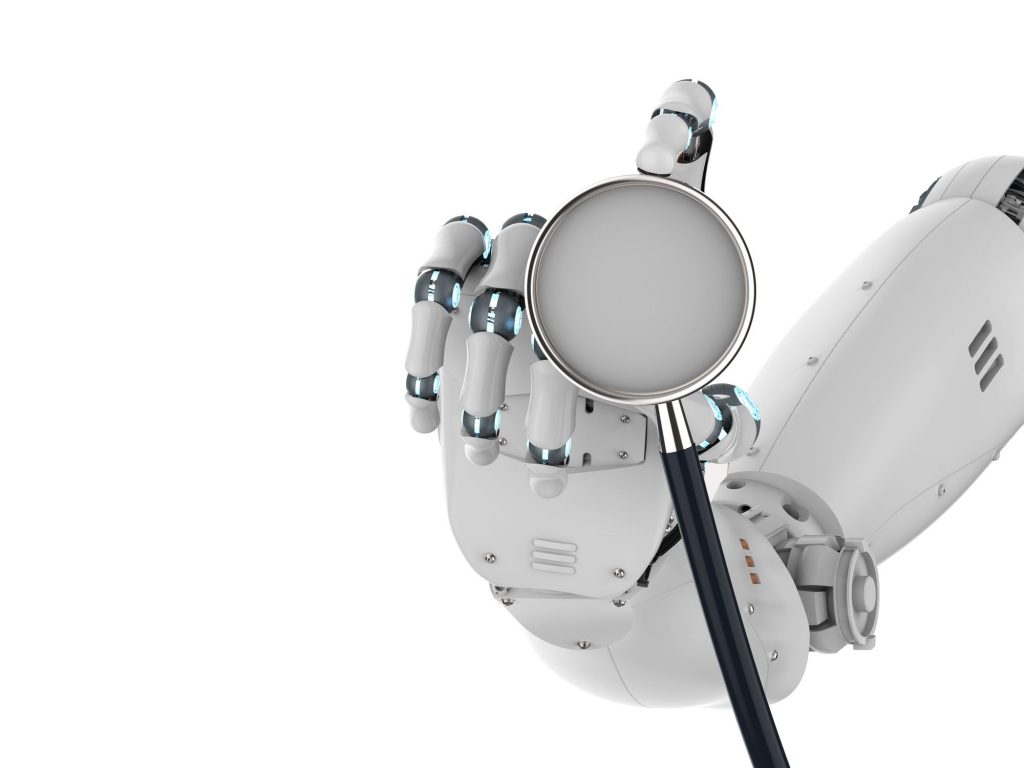Advances in technology have brought about major improvements in healthcare, but they’ve often included something far less welcome: increased costs. In fact, according to a study by bioethics research institute The Hastings Center, 40-50% of annual healthcare cost increases are due to new or increased usage of technology.
It’s a troubling trend, and a frustrating one, because technological advances in other areas of modern life bring about both better products and lower prices.
Healthcare is on the verge of following suit, however, thanks to artificial intelligence, big data and machine learning. According to a survey from Health Leaders Media titled “Analytics in Healthcare,” 14% of healthcare organizations use a software platform that includes AI capabilities. That number is set to increase significantly, with 35% saying they plan to implement an AI powered platform within the next three years.
These advances have the potential not only to lower costs, but to improve healthcare and make it more accessible.
More Data, More Accuracy
Innovations such as electronic health records (EHR) and devices connected to the internet of things such as wearables and remote patient monitoring have greatly increased the amount of medical data available.
Computer algorithms can search this data to discover patterns that can lead to more accurate diagnoses as well as forecasts that can impact public health.
Finally, the performance of machine learning algorithms improves with the amount of data it receives. In other words, the more data it’s given, the better the algorithm gets at using that data to spot patterns and make diagnoses.
Darren Schulte is the CEO of Apixio, a platform that uses AI to create insights fueled by data gleaned from large amounts of medical documents. In an interview with Healthcare Daily Online, he outlined his company’s vision for what AI can bring to the table for physicians.
“The medical records out there now are 80% of what is known about your healthcare. We’ve never seen the accumulation of data that can now be mined with computers and we want to be at the forefront of leveraging the information present in these medical notes, with computers reading [medical] language and making sense of it to create care profiles and look at individuals similar to you to see what worked and what didn’t for treatment that is informed. This allows your physicians to personalize your healthcare.”
Keeping Costs Down
AI and big data can lower healthcare costs by making earlier detection of disease possible, allowing for treatment before the disease has spread and requires more complex and expensive procedures. More data and the technology to study it with far more depth and accuracy than humans could increase the accuracy of a diagnosis and the effectiveness of treatment decisions, eliminating the guessing game that has often accompanied the isolation a medical issue.
AI is being applied to drug testing as well, which can take years and cost in the hundreds of millions of dollars. Only five of 5,000 drugs that undergo preclinical testing will go as far as human testing, a fraction of which will be approved for human use. AI has the potential to make this process far more efficient and cost effective by helping researchers predict the behavior of molecules and whether they can be used to make a medication.
Chatbots is yet another form of AI that could have an impact on healthcare, potentially alerting patients of an issue early on, or alleviating stress over an issue that does not require a doctor’s visit. Already deployed in retail settings, these bots are capable of answering basic questions while using machine learning to improve their efficiency and ability to understand new things. A post from USF’s Health IS Technology blog describes the potential for bot use in healthcare like this:
“Patients can interact with these bots through messenger interfaces. Someone might send one of these bots a message like, “My head has been hurting all morning. What can I do to make it stop?” Using its machine learning, a healthcare bot will analyze the question it is presented with and generate an intelligent response.”
Spending Decreases, Outcomes Improve
Obviously, many of the cost-cutting benefits also will lead to improved healthcare for patients. Earlier disease detection and increased accuracy in diagnoses means more chances to improve the patient’s outcome, allowing them potentially to avoid serious illness or death.
Other uses of AI in healthcare include making doctors more available for personal interaction with patients. AI allows doctors to have a wealth of information from medical papers and even news reports that may affect what they know about a patient’s condition. Not just raw data, but information that’s been analyzed and can be applied directly to the patient’s symptoms.
More Available Treatment
Technology such as telehealth has addressed some instances of accessibility, allowing patients in rural areas to be treated by urban-based specialists without having to make a lengthy journey from home.
AI however, has the potential to eliminate at least some visits to the doctor entirely. An example is Dr. A.I., which is available on Amazon’s virtual assistant, Alexa. Explain your medical issue and Dr. A.I. asks a series of questions to help narrow down what ails you. It may not eliminate the need to see the doctor entirely, but it can eliminate the initial “What’s wrong with me, Doc?” visit.
Another example of AI increasing accessibility is the Virta Health startup, co-founded by Sami Ikinen, a diabetes patient and successful entrepreneur. According to a story in Newsweek, Inkinen sought out two healthcare professionals who had written about reversing diabetes through constant adjustments in diet and lifestyle. The regimen, unfortunately, was practically impossible for anyone to follow, as it required near-constant observation and tweaking.
The three teamed up to create Virta, which allows patients to download an app onto their smartphones and enter data, either manually or with the help of wearable technology. A team of doctors hired by Virta to analyze the data and AI insights Virta provides then make a clinical recommendation for patients. The program allows for the treatment of 10 times as many patients as a doctor seeing patients individually. Additionally, access to a physician’s office or medical facility isn’t necessary.




